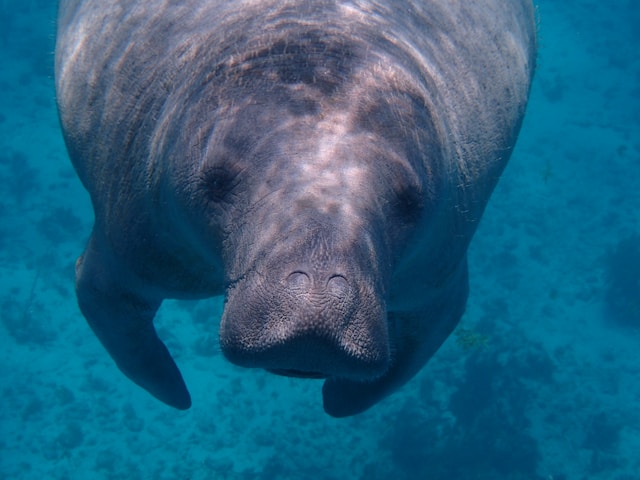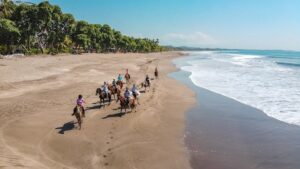In the crystal-clear waters of Belize, a remarkable marine creature gracefully navigates its habitat, embodying both tranquility and resilience. The West Indian manatee, often affectionately referred to as sea cows, holds a special place in Belize’s coastal ecosystems and cultural heritage. As gentle giants of the sea, these slow-moving mammals captivate the hearts of locals and visitors alike, offering a window into the intricate balance of marine life and human conservation efforts. Join us on a journey to explore the world of Belize’s West Indian manatee, from their majestic presence to the challenges they face and the ongoing initiatives to ensure their protection and preservation.
Majestic Marine Residents: Understanding the West Indian Manatee
The West Indian manatee (Trichechus manatus), a species of sea cow native to the waters of Belize, stands as a testament to the rich biodiversity that thrives in this Caribbean nation. These gentle giants are among the largest herbivorous mammals on the planet, with adults reaching lengths of up to 13 feet and weights exceeding 1,000 pounds. Despite their impressive size, manatees are known for their peaceful demeanor and slow, deliberate movements, earning them endearing nicknames like “gentle giants” and “sea angels.”
One of the defining features of the West Indian manatee is its unique physiology, perfectly adapted for life in aquatic environments. Their rounded bodies are covered in thick, wrinkled skin that provides insulation and protection against abrasive surfaces. Manatees also possess paddle-like flippers and a powerful tail, which they use with remarkable agility for swimming and maneuvering through the water.
In Belize, these marine mammals can be found in a variety of habitats, including coastal areas, estuaries, and rivers. They are particularly fond of warm, shallow waters where they can graze on seagrasses, their primary source of nutrition. Manatees are herbivores with a specialized diet, relying on a variety of aquatic plants to meet their nutritional needs. This diet, combined with their slow metabolism, contributes to their leisurely pace of life and low energy requirements.
Despite their peaceful nature, West Indian manatees face numerous threats to their survival. Habitat loss and degradation, caused by coastal development, pollution, and boat strikes, pose significant challenges to their populations. Additionally, manatees are vulnerable to entanglement in fishing gear and accidental ingestion of marine debris. Conservation efforts in Belize focus on mitigating these threats through habitat protection, public awareness campaigns, and collaborative initiatives with local communities and stakeholders.
Understanding the West Indian manatee is not just about admiring a fascinating marine species; it’s about recognizing the interconnectedness of ecosystems and the responsibility we share in preserving the natural world for generations to come.
Conservation Challenges and Efforts: Protecting Belize’s Manatee Population
The West Indian manatee, while emblematic of Belize’s marine beauty, faces a myriad of conservation challenges that threaten its existence. One of the primary concerns is habitat loss and degradation, driven by human activities such as coastal development, dredging, and pollution. As coastal areas undergo rapid urbanization and industrialization, manatees lose crucial feeding grounds, breeding habitats, and safe navigation routes. These disruptions not only fragment manatee populations but also increase their vulnerability to stress, disease, and predation.
Another significant threat to Belize’s manatee population is the alarming rise in boat strikes. Manatees, with their slow-moving nature and preference for shallow waters, often encounter boats and watercraft in areas frequented by humans. Collisions with vessels can result in serious injuries or fatalities for manatees, highlighting the urgent need for boater education, speed regulations, and designated manatee zones to reduce such incidents.
Furthermore, entanglement in fishing gear and marine debris poses a grave danger to manatees. Lost or discarded fishing lines, nets, and plastics can entrap manatees, causing injuries, infections, or even death by suffocation or starvation. The ingestion of plastics and other marine litter also leads to digestive blockages and toxicological effects, further compromising the health and well-being of these gentle mammals.
In response to these conservation challenges, Belize has implemented a range of initiatives aimed at protecting its manatee population. Collaborative efforts between government agencies, non-profit organizations, local communities, and researchers have led to the establishment of marine protected areas, wildlife sanctuaries, and manatee rehabilitation facilities. Public awareness campaigns educate residents and tourists about the importance of manatee conservation, encouraging responsible boating practices, waste management, and habitat stewardship.
Despite these efforts, the future of Belize’s manatees remains uncertain. Continued vigilance, scientific research, and community engagement are essential to safeguarding these iconic marine residents and preserving Belize’s natural heritage for generations to come.
Manatee Tourism: A Sustainable Approach to Encountering Belize’s Marine Treasures
The allure of Belize’s West Indian manatees extends beyond scientific fascination, drawing eco-tourists and nature enthusiasts eager to experience these gentle giants in their natural habitat. Manatee tourism presents a unique opportunity to promote conservation awareness, generate economic benefits for local communities, and foster a deeper appreciation for Belize’s marine treasures.
One of the key pillars of sustainable manatee tourism is responsible wildlife viewing practices. Tour operators and guides adhere to strict guidelines to minimize disturbances to manatees and their habitats. This includes maintaining a safe distance from the animals, avoiding loud noises or sudden movements, and refraining from feeding or touching them. By prioritizing the well-being of manatees and respecting their natural behaviors, tourists can enjoy meaningful encounters while minimizing stress and disruptions for the animals.
Educational initiatives play a crucial role in manatee tourism, providing visitors with insights into manatee biology, behavior, and conservation challenges. Interpretive centers, guided tours, and interactive exhibits offer opportunities for visitors to learn about the importance of preserving manatee habitats, reducing human impacts, and supporting conservation efforts. These educational experiences not only raise awareness but also empower tourists to become advocates for manatee protection and environmental stewardship.
Manatee tourism also contributes to the socio-economic development of coastal communities in Belize. Local guides, boat operators, and tour agencies benefit from increased tourism demand, creating jobs and income opportunities that support livelihoods and community resilience. Moreover, sustainable tourism practices promote the conservation of natural resources, cultural heritage, and traditional knowledge, fostering a sense of pride and ownership among local residents.
To ensure the long-term sustainability of manatee tourism, ongoing monitoring, research, and adaptive management are essential. By monitoring visitor activities, assessing ecological impacts, and incorporating feedback from stakeholders, Belize can refine its tourism strategies to balance conservation goals with economic benefits. Ultimately, sustainable manatee tourism offers a model for harmonizing human activities with nature, showcasing Belize’s commitment to preserving its marine biodiversity for future generations to enjoy.
Final Thoughts: Embracing the Legacy of Belize’s West Indian Manatees
As we conclude our exploration of Belize’s West Indian manatees, it’s clear that these marine mammals embody both the fragility and resilience of our natural world. Their gentle nature and iconic presence serve as a reminder of the interconnectedness of ecosystems and the importance of conservation efforts in safeguarding biodiversity.
Despite the challenges they face, from habitat loss to human-induced threats, manatees in Belize symbolize hope and opportunity. Through collaborative conservation initiatives, public awareness campaigns, and sustainable tourism practices, we can pave the way for a brighter future for manatees and the marine environments they inhabit.
The success of manatee conservation hinges on our collective commitment to protecting their habitats, reducing human impacts, and fostering a culture of coexistence between wildlife and communities. By valuing the intrinsic worth of these marine treasures and embracing our role as stewards of the environment, we can ensure that Belize’s West Indian manatees continue to thrive for generations to come.
Let us carry forward the legacy of these majestic creatures, not just as symbols of Belize’s natural heritage, but as ambassadors for marine conservation worldwide. By working together, we can create a world where manatees and all living beings coexist harmoniously, leaving a legacy of sustainability and respect for future generations to inherit.




